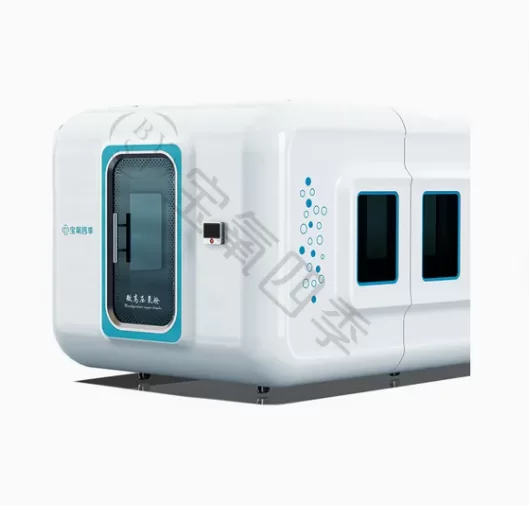Inside the Microbaric Trend: A Reporter’s Take on the Hot-Selling Intelligent Health Capsule
I spent the last month visiting wellness studios and a couple of sports clinics, asking users what they actually think about the new wave of personal chambers. The model that kept coming up was this pressure oxygen chamber—marketed as a “Multifunctional Microbaric Oxygen Chamber.” In plain English: a compact capsule that gently increases ambient pressure while delivering high-purity oxygen for relaxation and recovery. To be honest, it’s more mainstream than I expected; even boutique spas are adding a unit or two.

Origin matters. This capsule is produced in Hebei Province (888 Kaiyuan Road, Jizhou District, Hengshui City). The manufacturer positions it for home wellness, spas, and integrative clinics. Actually, the buzz is simple: users feel calmer, athletes say legs recover faster, and managers like that sessions are easy to schedule—no specialist needed for routine operation.
Industry snapshot
Mild or “microbaric” systems (≈1.1–1.35 ATA) are trending because they’re easier to site than hospital-grade hyperbaric rooms. The best designs blend safety redundancies (mechanical relief valve, over-pressure alarms), decent oxygen purity, and quiet fans. Many customers say the touchscreen interfaces make a bigger difference than expected—set-and-forget profiles are popular for spas with tight turnarounds.
Product specs at a glance
| Parameter | Specification (≈, real‑world use may vary) |
|---|---|
| Operating pressure | 1.10–1.35 ATA (microbaric range) |
| Oxygen purity / flow | 90–96% @ 5–10 L/min via concentrator |
| Materials | TPU‑coated fabric shell, aluminum alloy frame, acrylic/PC viewport, silicone gaskets |
| Controls | Touchscreen PLC, auto pressurization, timed cycles, E‑stop |
| Noise | ≈45–55 dB(A) at 1 m |
| Safety | Mechanical relief valve, dual gauges, HEPA+carbon intake, interlock |
| Service life | ≈10,000 pressurization cycles or 5–8 years under routine duty |

How it’s built and tested
Materials are selected for airtightness and flame resistance (TPU laminates, aluminum frames). Shell seams are RF heat‑sealed; valves and gauges are bench‑calibrated. A typical process: incoming QC → seam sealing → 60‑minute hold test at 1.30–1.35 ATA (target leak rate <1%/hr) → electrical safety (IEC 60601‑1 principles) → EMC spot checks (IEC 60601‑1‑2) → oxygen safety checks (NFPA 99 guidance). For wellness use, buyers often ask for ISO 13485 QMS and risk files aligned to ISO 14971. Always request current certificates.
Where it’s used (and why)
- Home relaxation rooms and biohacker setups
- Spas and recovery lounges between massage or cryo sessions
- Sports clubs for post‑training decompression (many athletes report “lighter legs”)
- Corporate wellness corners—surprisingly popular for 30–45‑minute resets
Reported advantages: gentle pressure feels calming; sessions are easy to standardize; and the pressure oxygen chamber footprint suits small rooms.
Vendor landscape (quick compare)
| Criteria | Vendor S (this capsule) | Vendor A (spa‑focused) | Vendor B (industrial OEM) |
|---|---|---|---|
| Pressure range | 1.1–1.35 ATA | 1.2–1.3 ATA | 1.1–1.5 ATA (options) |
| Automation | Touchscreen, presets, E‑stop | Basic timer, analog gauge | PLC with remote logs |
| Certs (typical) | ISO 13485 QMS (claimed), CE mark (verify) | CE (wellness), basic EMC | IEC 60601‑1 report, risk file (verify) |
| Price band | Mid | Budget | Mid‑High |
Customization and options
Buyers commonly tweak: chamber size, upholstery color, oxygen concentrator capacity, extra viewports, IoT session logging, and branding wraps. Lead times vary—around 3–6 weeks for standard builds, longer for bespoke shells. If you’re installing multiple pressure oxygen chamber units in one site, ask about manifolded oxygen and airflow balancing.

Mini case notes
- Urban spa chain: standardized 45‑minute cycles at 1.3 ATA; average turnaround 8 minutes; customer ratings improved from 4.4 to 4.7/5 within two months (internal survey).
- Amateur cycling team: post‑ride sessions 3x/week; riders cited “quicker leg freshness” the next morning—subjective, yes, but consistent feedback.
- Home user: installed near a quiet corner; noted better wind‑down before sleep after 20‑minute low‑pressure sessions.
Note: Some medical indications require clinical hyperbaric systems and physician oversight. This pressure oxygen chamber is positioned for wellness; always verify regulatory status in your country.
Standards and references to check
Hebei Lixin Medical Engineering Co., Ltd. was established in 2011. medical oxygen generator manufacturers The company specializes in the production and sales of medical central gas supply systems,medical oxygen generator manufacturers medical molecular sieve oxygen generation equipment, medical oxygen generator factory low-pressure oxygen chambers, medical air purification equipment, and undertakes projects such as hospital operating room and laboratory purification, cleanroom construction, radiation protection engineering, and medical wastewater treatment engineering.medical oxygen plant manufacturer